Estimated reading time: 13 minutes
Uganda is home to half of the world’s remaining mountain gorilla population, the other half being just over the border in Rwanda. Africa Safari Experts Bonita and Tracy packed up their trekking gear and headed for Uganda’s exquisite montane rainforests.

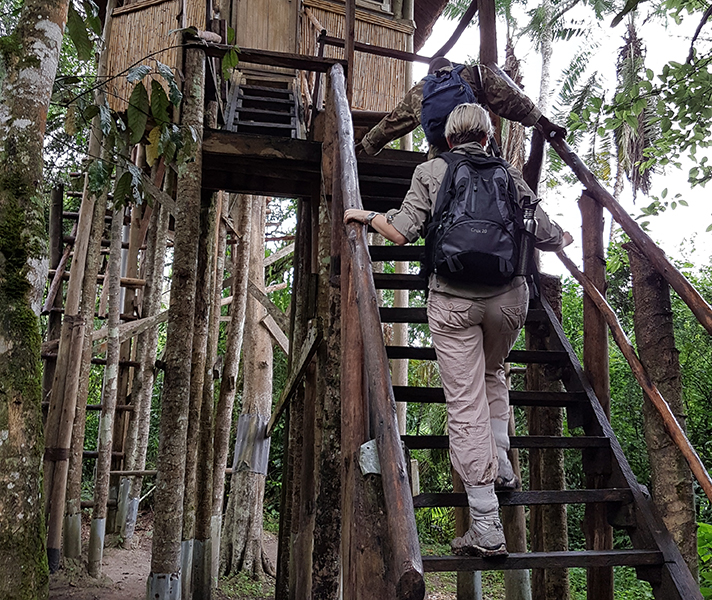
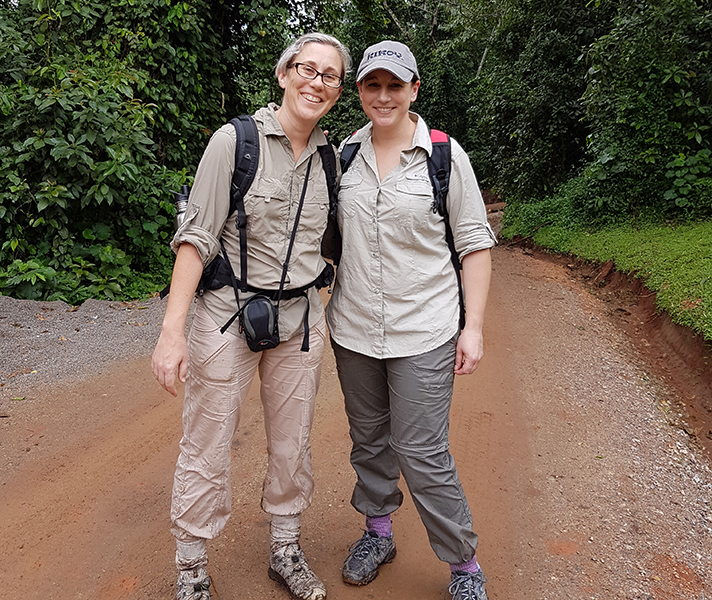
What were the highlights of your trip?
Chimp trekking in Kibale Forest was a definite highlight. When we trekked, the chimps were in the forest canopy which made it harder to see them. Our guide spotted one of the males coming down so we broke away from the rest of the trekking group and followed the lone male chimp through the forest.
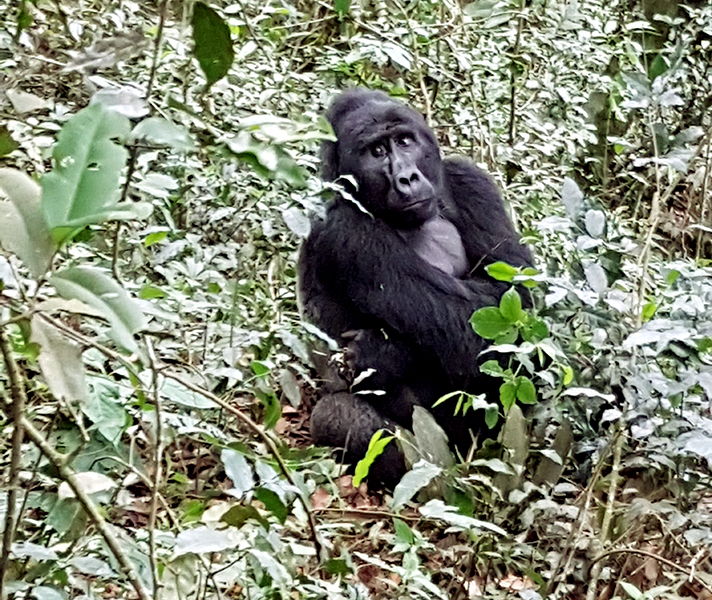
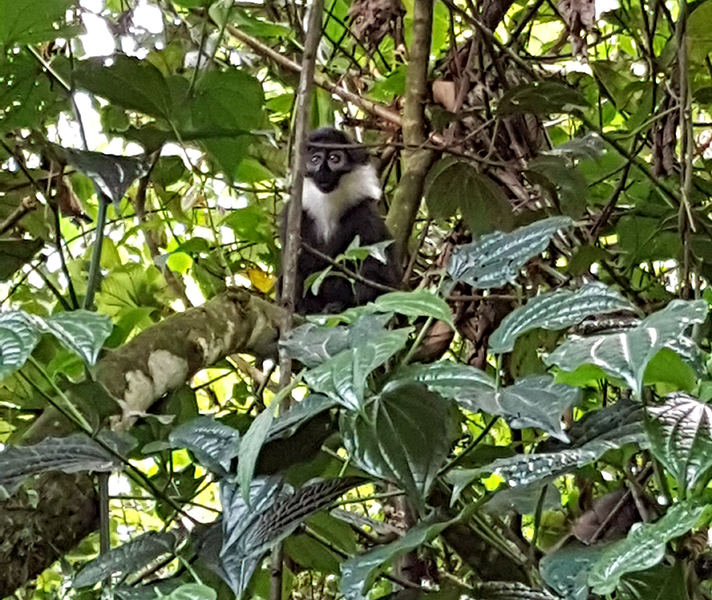
Gorilla trekking in Bwindi Impenetrable National Park is usually the reason most people visit Uganda, and the experience truly is out-of-this-world special. The gorillas were feeding and on the move when we located them, which meant we were on the move too! We saw two juveniles play-fighting on a branch (just like little kids) and we saw a silverback carry a baby, which is a very rare sighting as the males usually do not get involved with the youngsters.
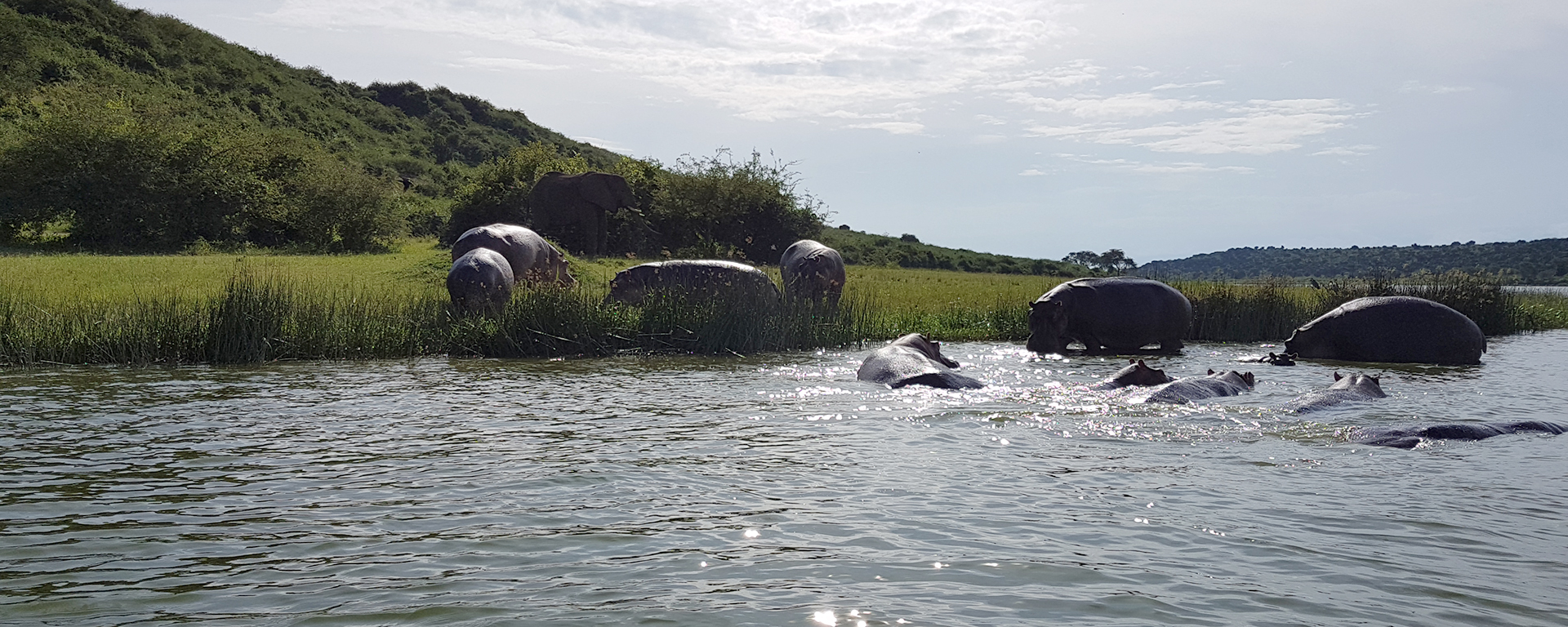
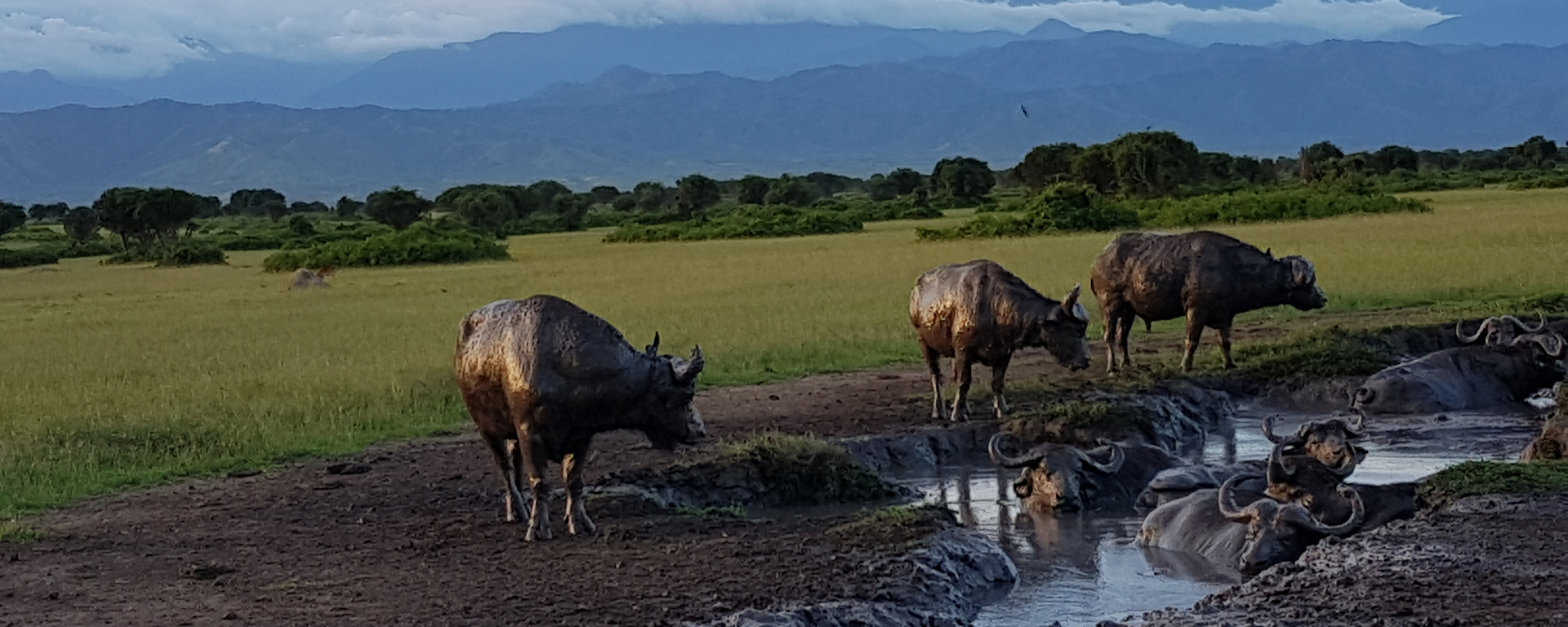
We also enjoyed the boat cruise on Kazinga Channel in Queen Elizabeth National Park. The channel joins two large lakes where a variety of animals like crocodiles, hippos, elephants and buffalo as well as birds can be seen. It was also interesting to see villages on the banks of the channel within the national park and how the people and their livestock co-exist peacefully with the wild animals.

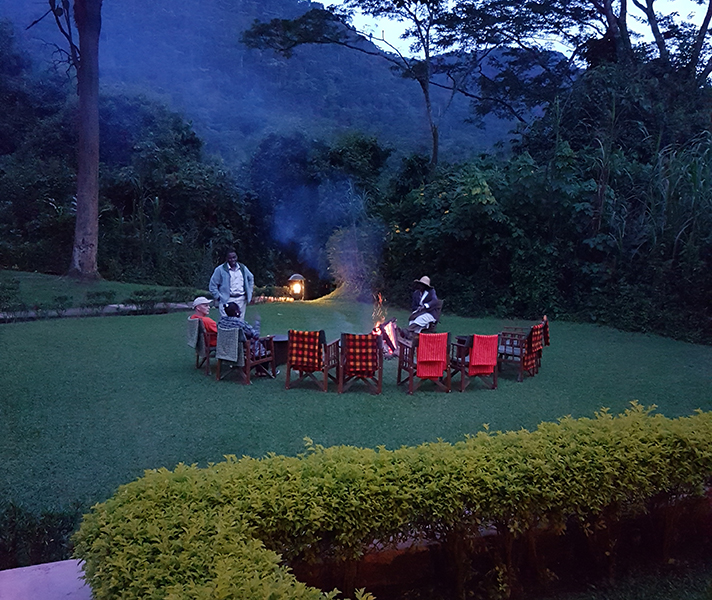
Our visit to Deo’s Village in the south of Queen Elizabeth was one of the cultural highlights of the trip. It was a very authentic experience and very interesting to see the types of crops they grow to sustain the family, as well as medicinal plants. We also learnt more about how they keep wild animals away from their crops, including a deep, wide elephant trench that spans 20 kilometres (12 miles). They have a lovely curio shop that is stocked by widowers, and the money is used to maintain their elephant trench in front of the village as they are not able to do it themselves.
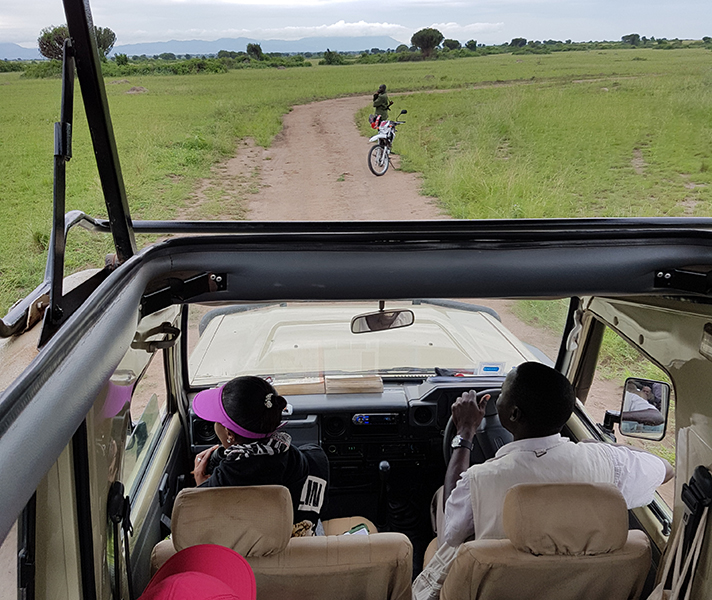
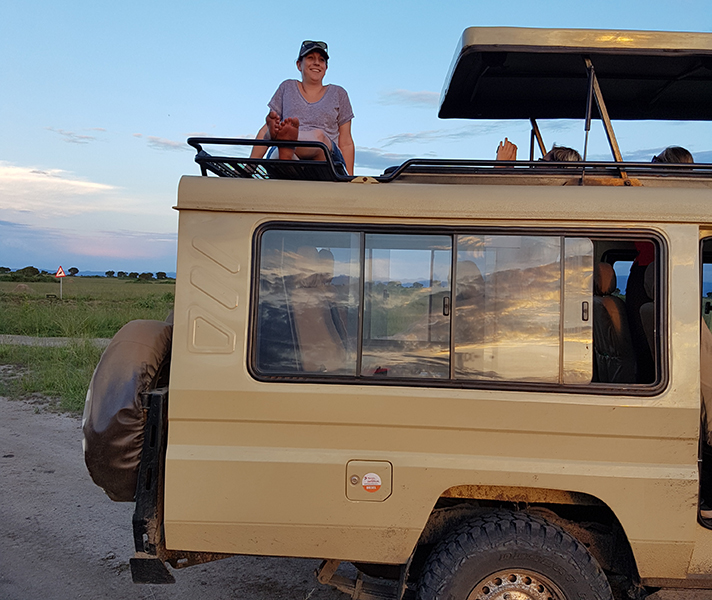
Tell us more about your itinerary?
We landed at Entebbe International Airport and spent our first night in the city. From Entebbe, we took a short flight to Kasese Airstrip in western Uganda. From then on, we had a private 4×4 vehicle and guide who transferred us by road.
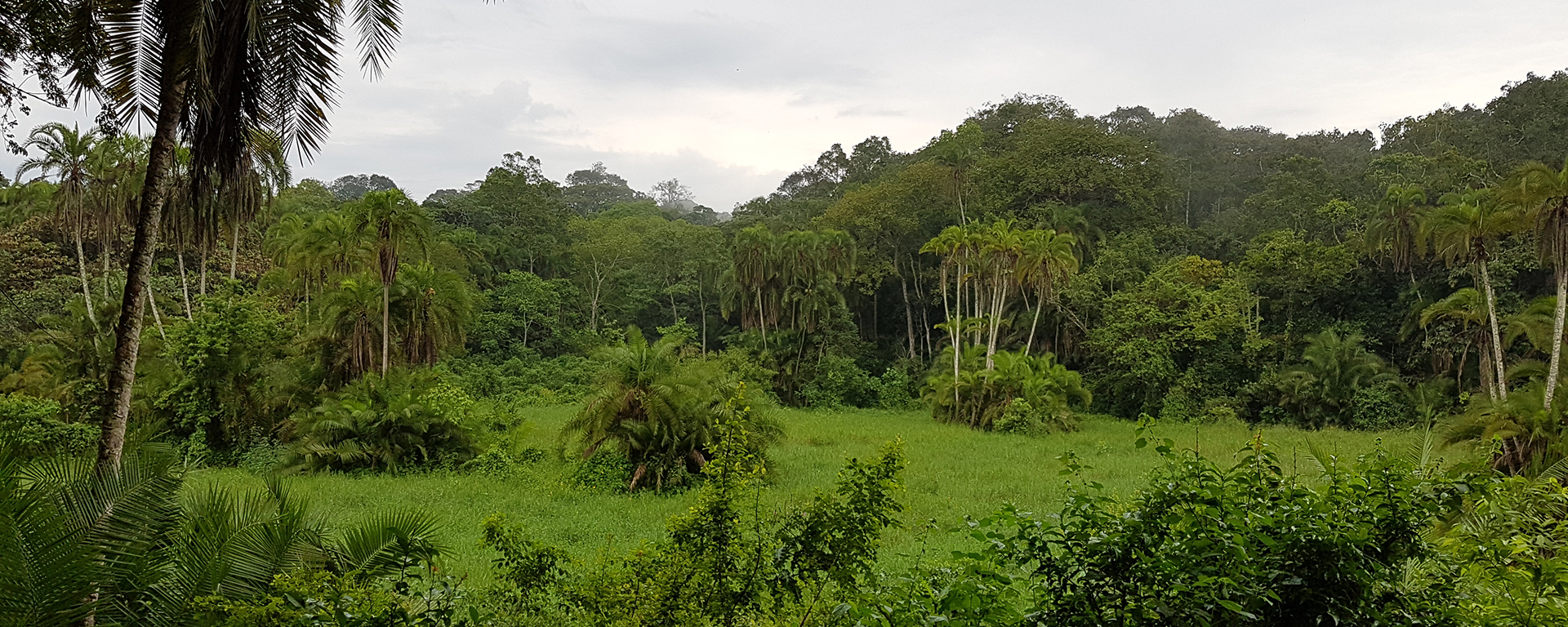
Our first destination was Kibale Forest, where we spent one night and went chimp trekking. We then passed through the beautiful mountains and fertile slopes of western Uganda for two nights at Queen Elizabeth National Park – home to elephants, hippos, buffalos and lions. Moving south we spent a third night in the park, in its southern reaches, at Ishasha Plains, known for its tree-climbing lions. From there we moved to Uganda’s famous Bwindi Impenetrable National Park for two nights and an epic gorilla trek. Finally, we crossed over to Rwanda for one night, before flying home from Kigali International Airport.
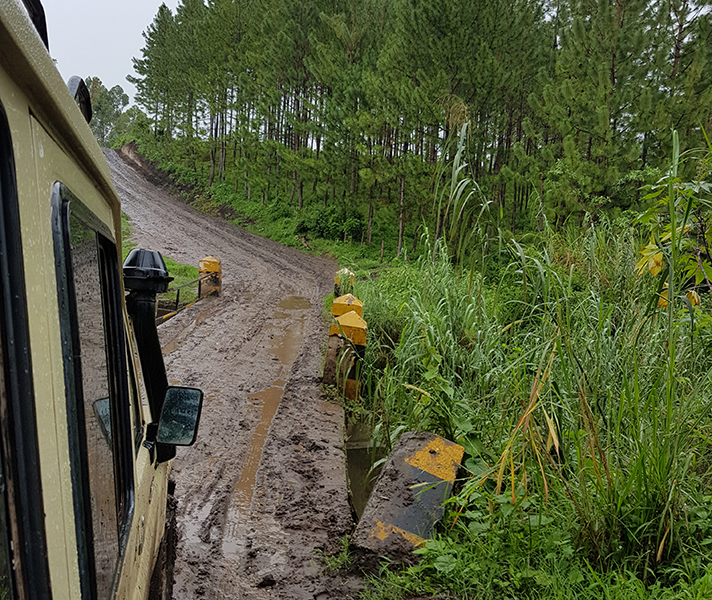
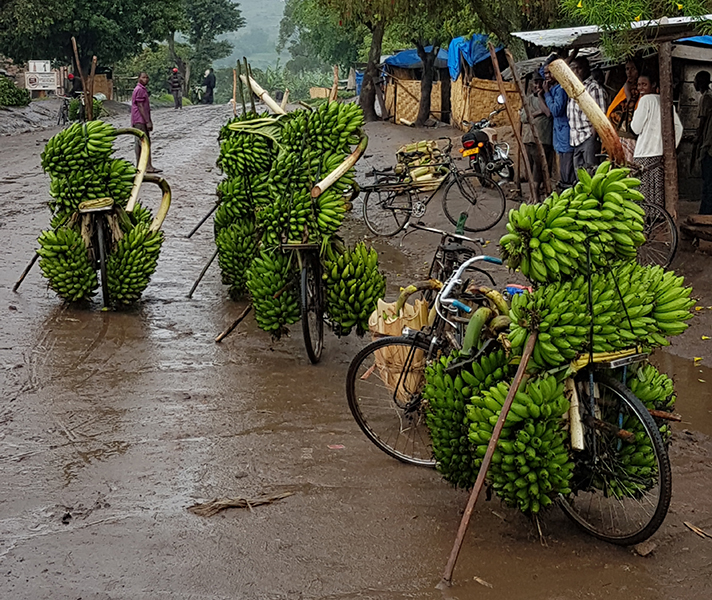
Driving distances between destinations can be long and the roads are not the best but driving allowed us to get a really good feel of the country. The scenery was beautiful and lush, and there was always something new to see along the way. I would recommend packing a good neck pillow, road-tripping music on your iPod and some snacks (it’s not really an option to buy items along the way).
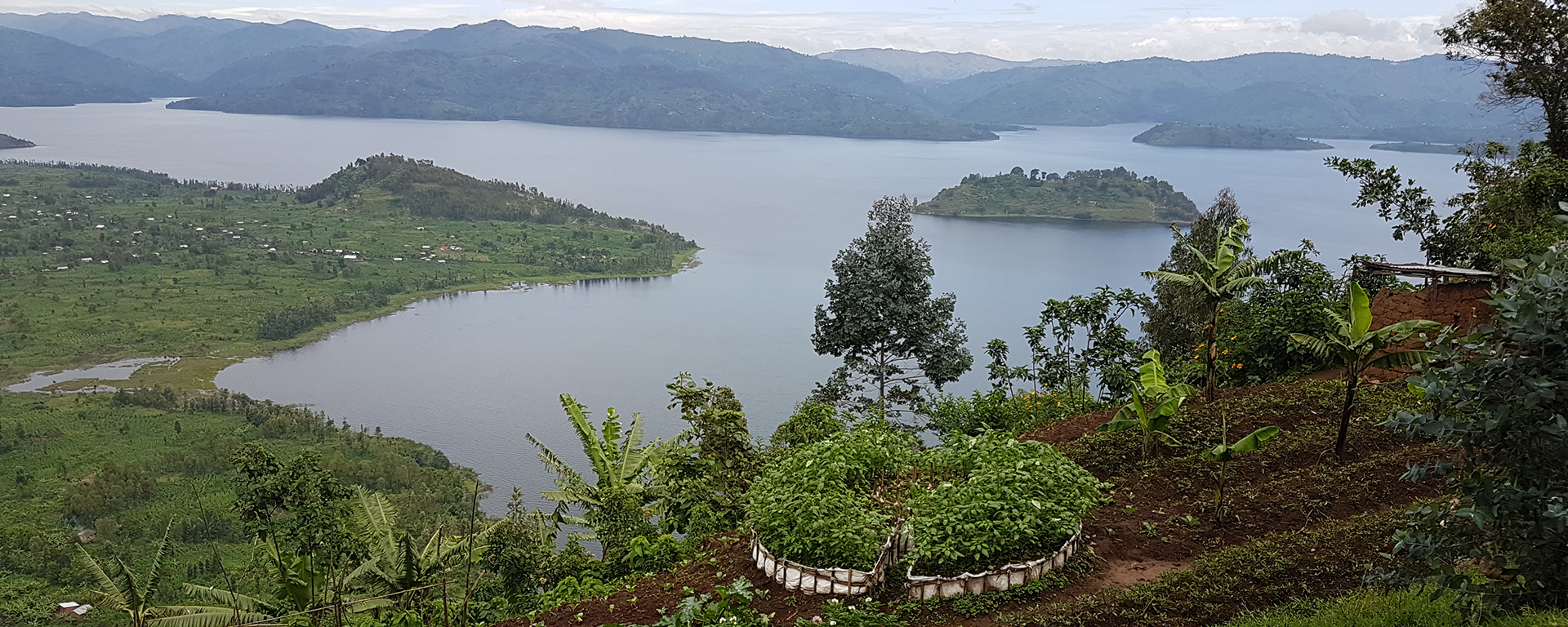
If you are looking for a quick in-and-out gorilla-trekking experience then I would recommend flying between destinations (or go trekking in Rwanda as the drive from Kigali to Volcanoes National Park is only about three hours long). If you’re flying through Uganda, it’s important to note that not all lodges have their own vehicles so it is often necessary to arrange a private vehicle and guide to meet you at the airstrip and transport you to and from the lodge and various activities. We do this for all our clients.
What did you eat?
The cocktails at Kyaninga Lodge were amazing – they use fresh ingredients straight out of their garden. Ugandans use a lot of what is in-season and juice is freshly squeezed. Watermelon was definitely in season when we were travelling so we got to sample a lot of watermelon juice!
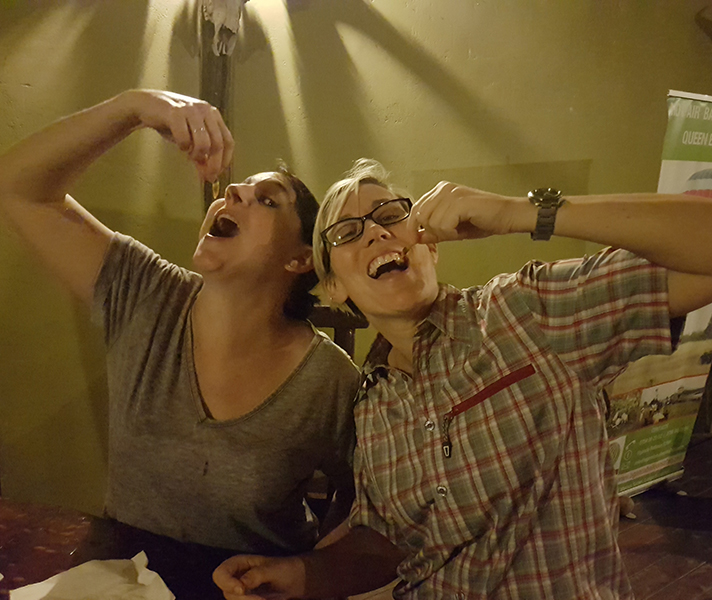
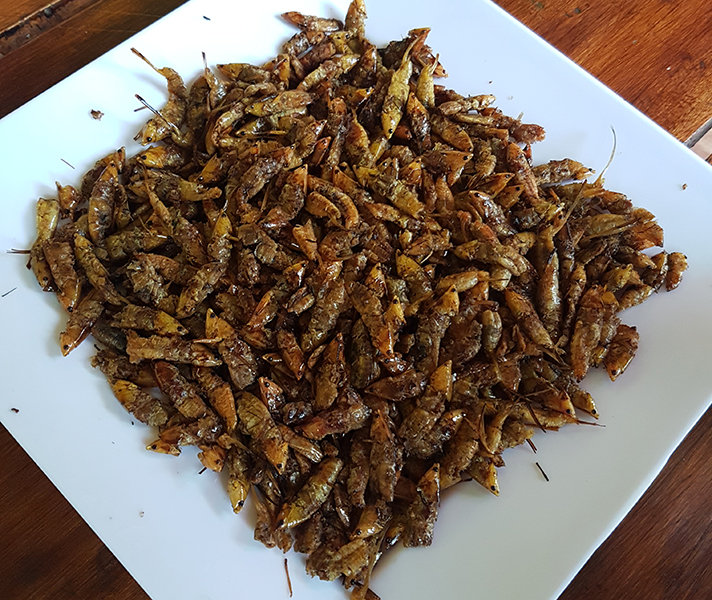
We had a tasting dinner at Kasenyi Safari Lodge, which included a selection of bite-size starters, soups and for mains, a variety of traditional Ugandan food in combination with some of the chef’s favourite dishes were served.
One of the more unusual foods is called a ‘rolex’ (‘rolled eggs’) which is a rolled chapatti with egg, vegetables and even meat inside. ‘Nsenene’ is fried grasshoppers. The really crunchy ones reminded me a bit of pork crackling!
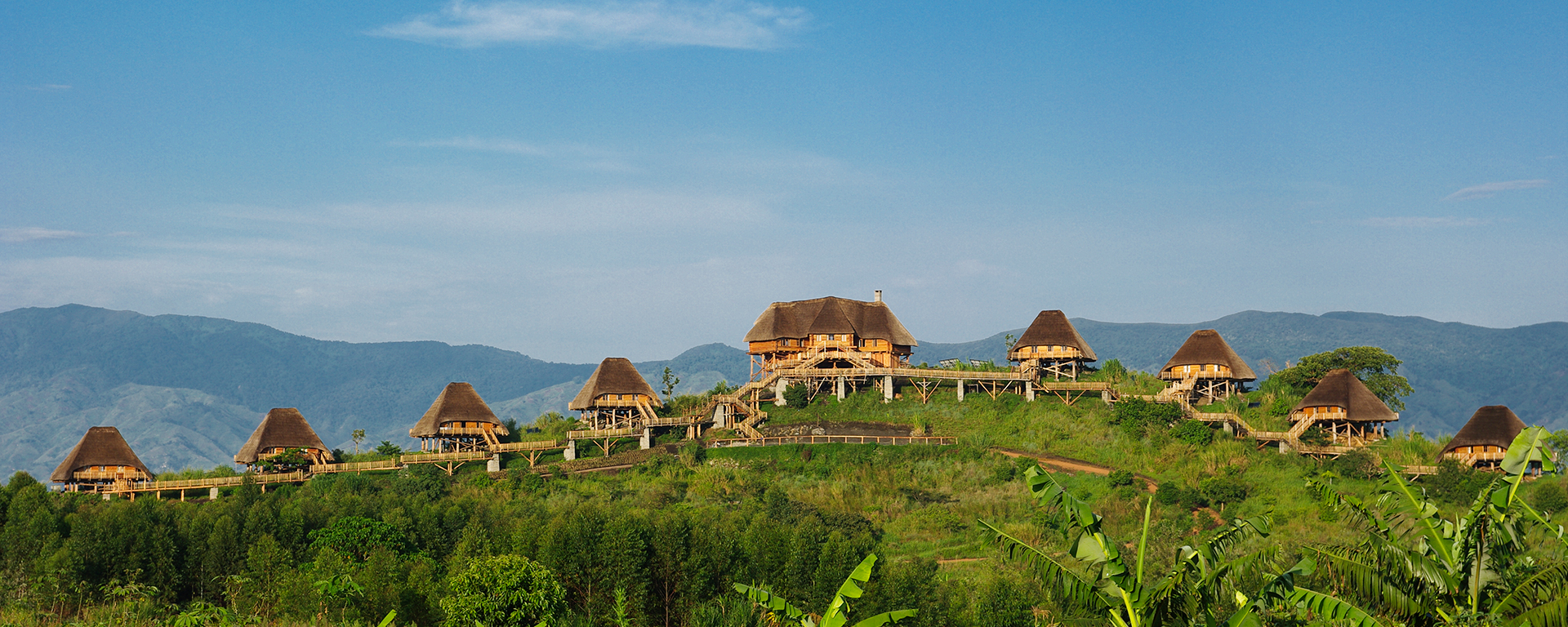
What were the lodge and accommodation highlights?
Kyaninga Lodge was built by hand using only locally sourced materials. No heavy machinery was used and it took them six years to complete. There are amazing views over a crater lake, which is one of the few crater lakes where you can actually swim or even take out a canoe. There was also a selection of other activities including an in-room massage service, bowls, croquet, badminton and tennis.
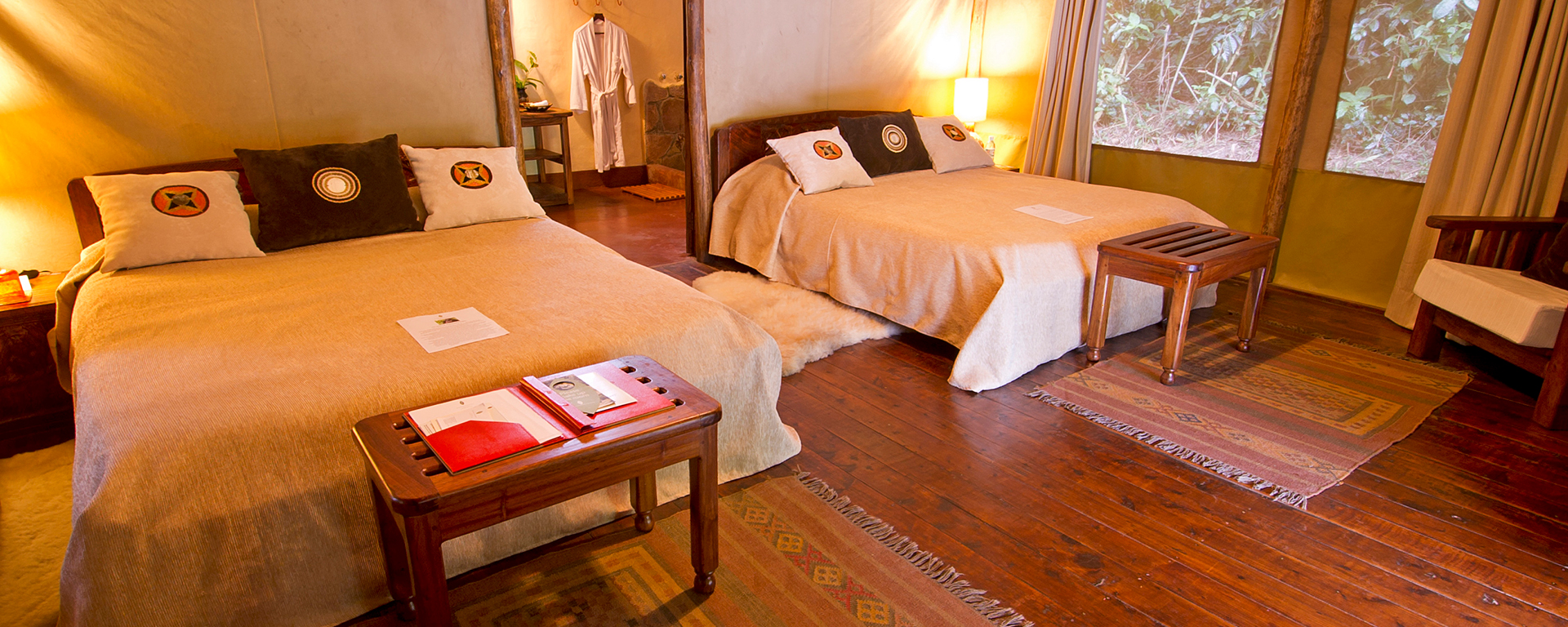
Kyaninga Lodge had specialists bought in from the United Kingdom to train staff so we received top-notch service. More than that, the staff were genuinely welcoming. The lodge manager even delayed going home to take us to the start of the crater lake hike, even though his walk home later would be two hours long.
The owner at Kasenyi Safari Camp had such passion for his lodge and the country, and really made an effort to engage with us, and ensure that all his guests were content.
Sanctuary Gorilla Forest Camp was lovely and cosy. This is where we stayed to go gorilla trekking. The lodge has amazing views over Bwindi Forest, and according to the staff, gorillas often visit the camp.
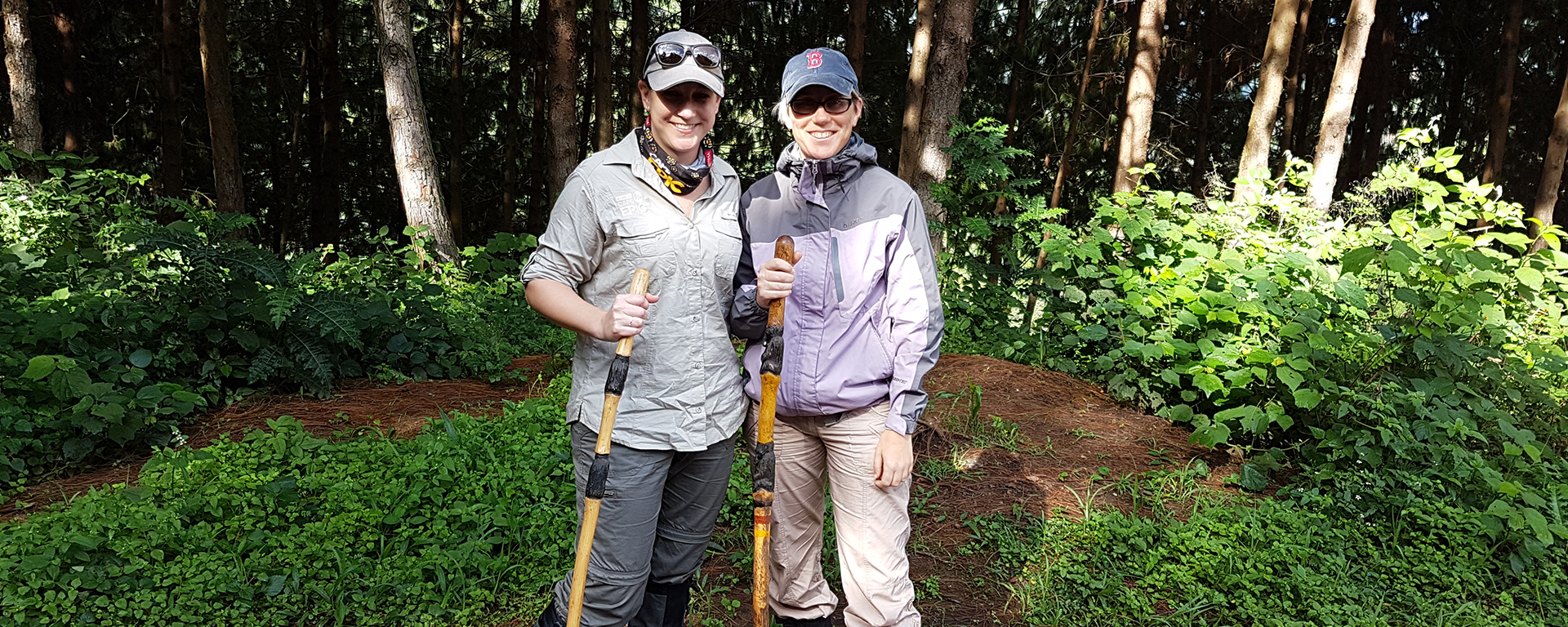
Top travel tips for Uganda?
I strongly recommend taking local currency in cash. Not many lodges accept US dollars and most lodges do not have credit-card facilities.
It’s important to note that there are weight restrictions on certain flights in Uganda. On our regional flight from Entebbe to Kasese, we had restrictions of 15 kilograms (33 pounds) for both hand and check-in luggage (both bags had to be soft-sided). Be sure to check with your travel agent on this.
Items I found indispensable were gaiters for trekking, a buff, and snacks for the road. Our infographic on What to Pack for Gorilla Trekking offers a detailed checklist of the best types of clothing and other essentials for trekking in Uganda.
We travelled in one of Uganda’s two rainy seasons (mid-September to November) so lots of bug spray was required for the mosquitos. The other rainy season is from March to May.
Would you combine Uganda with any other destination?
Uganda is a lovely stand-alone destination and offers a lot more than just chimp and gorilla trekking. If you have time and would like to combine the experience with a classic African safari, I recommend Kenya or Tanzania – two iconic safari destinations that both border Uganda.
If you are more pressed for time but would still like to do both chimp and gorilla trekking, a quicker alternative is to go gorilla trekking in Rwanda, followed by chimp trekking in Tanzania at Rubondo Island. From there you can connect with a flight into the Serengeti for a classic Tanzania safari.
Want to know more about gorilla trekking in Uganda from someone with first-hand travel experience? Get in touch to speak to one of our African Safari Experts.
